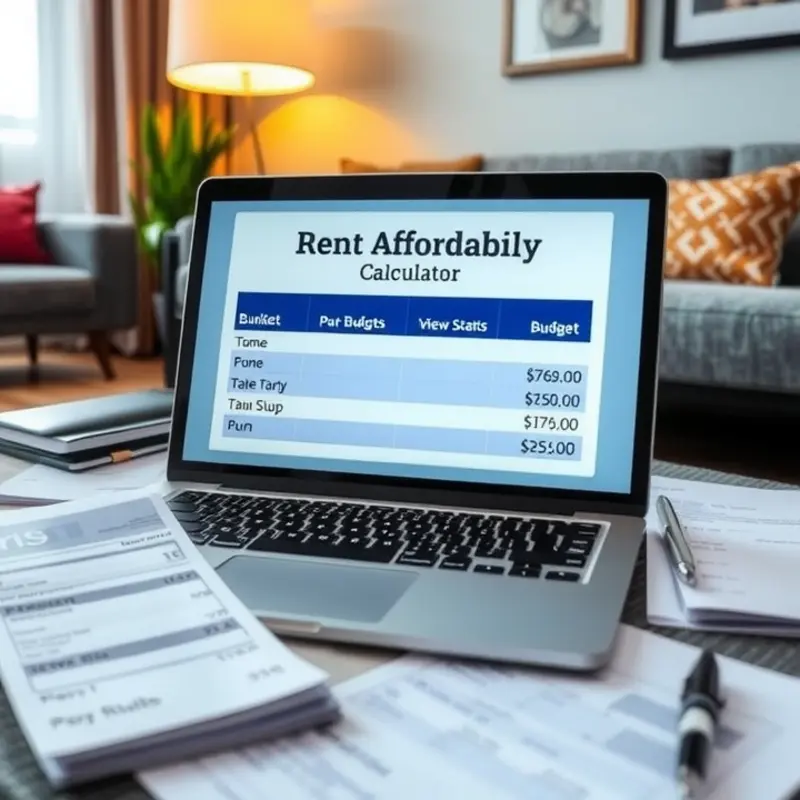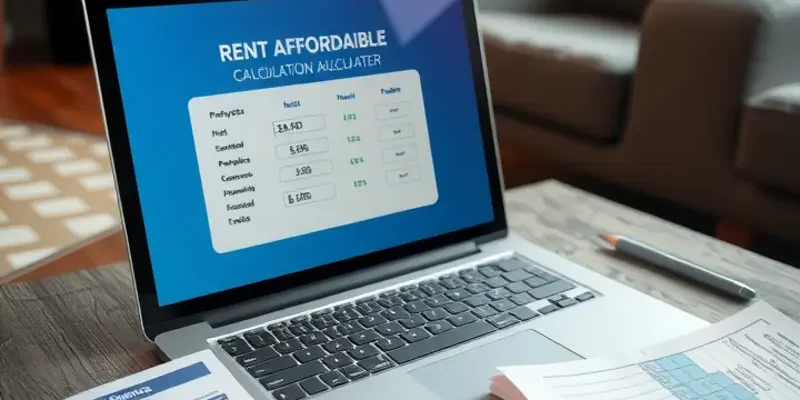For many young professionals, students, couples, and families entering the rental market, understanding how much you can afford to pay in rent can feel overwhelming. Rent affordability calculators are powerful tools that help clarify your financial situation and guide you toward making informed decisions. By factoring in your income, expenses, and lifestyle preferences, these calculators give you a clearer picture of what you can realistically afford. Whether you’re a first-time renter looking for a cozy studio or a family seeking a spacious apartment, utilizing these tools can save you time, stress, and money. This guide will explore how to leverage rent affordability calculators effectively, highlighting their features and providing practical tips to maximize your renting experience. By the end, you’ll have the tools and confidence needed to tackle the rental market head-on, ensuring that your next home is not just a place to live, but a supportive environment for your personal and professional growth.
Understanding Rent Affordability Calculators

Rent affordability calculators have become indispensable tools for renters, offering insights into how much one can realistically afford to spend on housing. By assessing different financial aspects, these calculators provide a personalized estimate that simplifies the decision-making process.
At their core, rent affordability calculators consider various financial inputs to determine an optimal rental budget. These include income, existing debts, and living expenses. Understanding and inputting these parameters accurately is vital for receiving meaningful results.
Income is the most crucial variable. Renters should provide their gross monthly or annual income, as calculators often use this figure to suggest a rental budget relative to earnings. Typically, financial experts recommend spending no more than 30% of one’s income on rent, but individual circumstances can affect this guideline.
Debt is another key factor. Student loans, credit card debt, or car payments can substantially impact one’s financial health. Rent affordability calculators take these obligations into account, providing a more nuanced view of what remains available for rent after these debts are serviced. Ideally, debt obligations should remain under 20% of gross income, allowing room for living expenses and savings.
Living expenses encompass essential costs like groceries, transportation, and utilities. Accurate estimates of these expenses help calculators deliver tailored recommendations, ensuring renters don’t overextend themselves. Underestimating living expenses might result in an inflated sense of available funds, leading to potential financial strain.
While calculators are incredibly useful, they demand precision. Renters should ensure that they input up-to-date and complete information. This includes seasonal fluctuations in income or expenses, as well as any anticipated changes in financial commitments. Providing partial information can skew results, making the final budget estimate less reliable.
Several important terms frequently appear in rent affordability calculators:
- Net Income: The take-home pay after taxes and deductions, which is a more reliable figure for budgeting than gross income.
- Debt-to-Income (DTI) Ratio: A percentage that compares monthly debt payments to monthly income, indicating financial health.
- Fixed vs. Variable Expenses: Fixed expenses are consistent monthly costs, while variable ones can change. Knowing the difference helps in planning and using calculators effectively.
Beyond the numbers, calculators offer a chance to evaluate lifestyle choices. They can prompt considerations such as whether a less expensive neighborhood may offer a more balanced lifestyle, freeing funds for savings or other priorities. For those uncertain about which factors to prioritize, exploring additional resources on financial planning for renters can provide comprehensive strategies. Visiting financial planning guides can shed more light on refining these calculations.
Effectively using rent affordability calculators requires more than entering numbers; it involves a holistic appraisal of one’s financial environment. By thoroughly understanding how these calculators work, renters can make astute housing decisions that align with their broader financial goals.
Maximizing Your Rent Budget: Practical Tips

When stepping into the rental market, ensuring your budget is aligned with your financial goals is crucial. A balanced budget not only ensures timely rent payments but also aids in a stress-free living experience. Begin by calculating your total monthly income and identify all essential expenses, including utilities, groceries, and transportation. Allocate no more than 30% of your income to rent to maintain a healthy financial balance.
Prioritizing essential expenses helps you determine areas where spending can be minimized. Reducing non-essential costs, such as dining out or subscription services, can free up significant funds. Re-evaluating lifestyle choices does not mean sacrificing comfort entirely. For instance, cooking at home can be not only cost-effective but also a fun and healthy alternative.
Negotiating rent is often overlooked by new renters but can be a powerful tool. Approach negotiations with research. Understand the local rental market to gauge fair rates. Offer a longer lease or upfront rent payment to entice landlords to lower the monthly rate. Renting scenarios vary significantly, so adapting these strategies to your specific context is essential.
To enhance affordability, consider making small adjustments. Opt for energy-efficient appliances to reduce utility bills or use public transport instead of personal vehicles. You might explore living in slightly less popular neighborhoods; this can often result in lower rental prices yet offer substantial living comforts.
Budgeting tools can significantly streamline your financial planning. Utilizing spreadsheets to organize monthly expenses, or using financial apps to track spending, can offer valuable insights into your financial habits. These tools help identify wasteful spending areas, allowing for timely corrective measures. Additionally, ease of access to these tools can help keep your budget updated and relevant.
For more tailored guidance, exploring various resources, such as financial planning tips specific to renters, can offer deeper insights. Financial Planning for Renters presents a structured approach to managing finances effectively within the rental market.
Ultimately, maximizing your rent budget is about intelligent financial management and informed choices. Armed with the right strategies and tools, you can find a perfect home without straining your finances.
Final words
Navigating the rental market can be a daunting experience, especially for young professionals and first-time renters. Leveraging rent affordability calculators and practical budgeting strategies can significantly ease this journey. By clearly understanding your financial capacity, you empower yourself to make informed choices, ensuring that your next rental fits your lifestyle without compromising on financial stability. Remember, the key is to stay organized, keep an open mind, and focus on what truly matters when selecting your new home. As you embark on this exciting phase, secure peace of mind and clear financial understanding by taking advantage of these invaluable tools.









